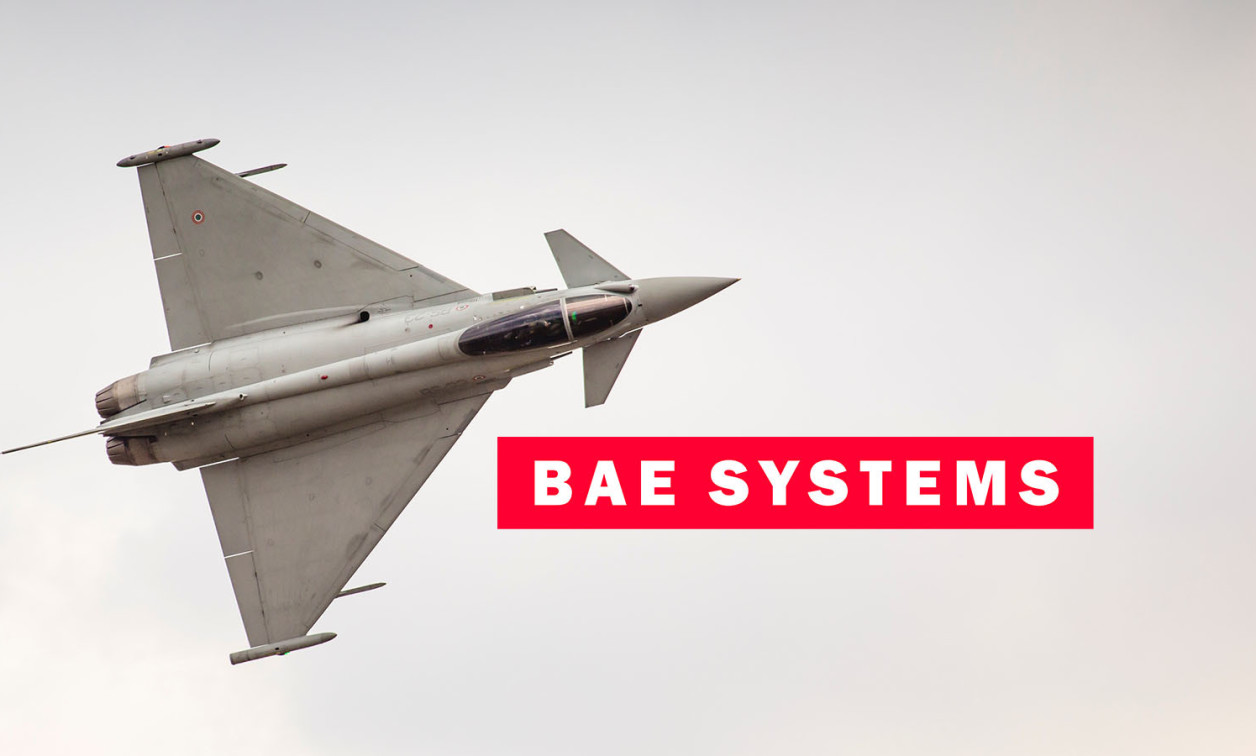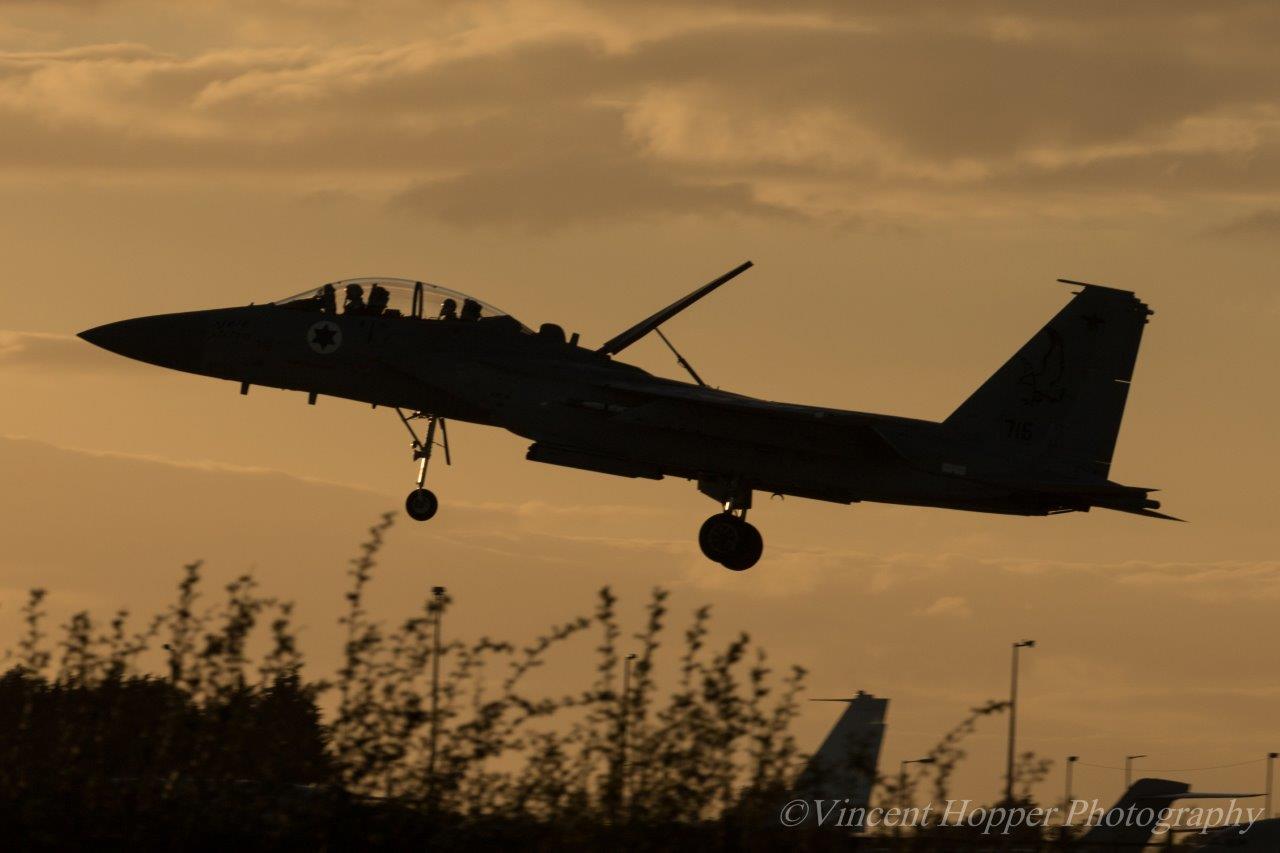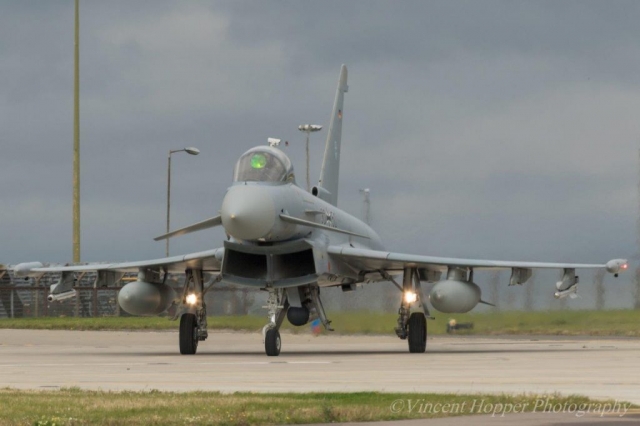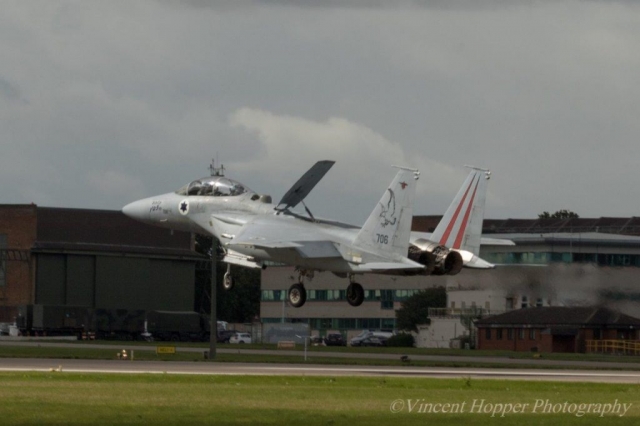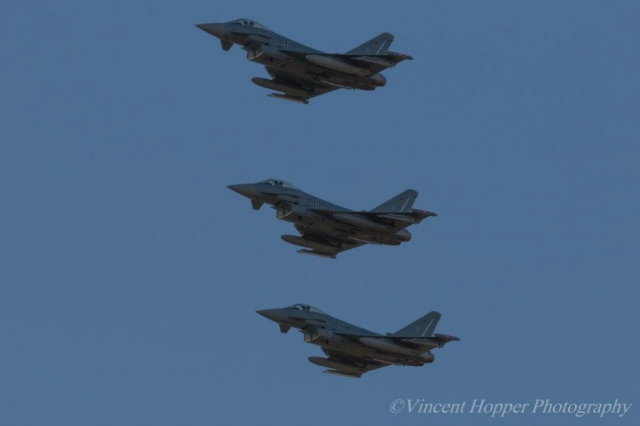Tag Archives: RAF
£317m contract awarded to develop next generation radar for the Royal Air Force Typhoon
BAE Systems and Leonardo have been awarded a contract to develop the Active Electronically Scanned Array (AESA), the European Common Radar System Mark 2(ECRS Mk2) radar, to a standard ready to be integrated on to RAF Typhoons.
It will sustain more than 600 highly skilled jobs across the country, including more than 300 at Leonardo’s site in Edinburgh, over 100 electronic warfare specialists at the company’s site in Luton, and 120 engineers at BAE Systems’ site in Lancashire.
The ECRS2 is a multi-functional array (MFA) that will give UK Typhoons a world-leading Electronic Warfare capability, in addition to traditional radar functions, including wide band Electronic Attack. It will equip RAF pilots with the ability to locate, identify and suppress enemy air defences using high-powered jamming. They can engage targets whilst beyond the reach of threats – even when they’re looking in another direction – and operate inside the range of opposing air defences, remaining fully protected throughout. This game-changing capability will replace the mechanically-scanning radar that RAF Typhoons are currently equipped with and will ensure the UK retains the freedom to deliver air power wherever and whenever it is needed. It also enables the Typhoons to link up with future data-driven weapons to combat rapidly evolving air defences, ensuring that UK Typhoons can continue to dominate the battlespace for years to come.

Andrea Thompson, Managing Director Europe & International for BAE Systems’ Air sector, said:
“This capability will allow Typhoon to take its place in the future battlespace for decades to come, maturing key technologies for future combat air systems and ensuring interoperability. As well as securing highly skilled jobs, it will sustain the key skills needed to keep the UK at the forefront of the global Combat Air sector. We look forward to continuing to work alongside the Eurofighter nations and our industry partners to ensure Typhoon delivers the needs of today and answers the challenges of tomorrow.”

Mark Hamilton, Senior Vice-President Electronic Warfare, Leonardo, said:
“This contract is great news for the UK, which will get the world’s most capable fighter radar, and great news for British engineering. Inventing, developing and building advanced technology here in the UK allows us to understand and meet the specific requirements of our Armed Forces and to secure export orders all around the world, boosting the whole UK economy.” The new radar will be based on Active Electronically Scanned Array (AESA) technology and will provide game-changing capabilities based on a revolutionary MFA. It has significantly more Transmit-Receive Elements than other radars, making Mk2 the most capable fighter AESA radar in the world, maintaining the same power and precision of traditional radars but also enabling the simultaneous operation of its wide-band Electronic Warfare functionality. BAE Systems, the UK’s prime contractor for the Typhoon, will integrate the new sensor which will be developed by Leonardo, the UK’s defence electronics champion.
Both companies are currently working as part of a four-nation development programme alongside Eurofighter consortium partners in Germany, Spain and Italy on a baseline version of the AESA radar. The ECRS Mk2 is a completely new approach designed to meet the operational needs of the RAF and future export customers. The UK’s commitment follows a similar commitment from Germany and Spain to deliver their own national requirements for an AESA radar.
Former Royal Navy Harriers to take to the skies again!
The Harrier, informally referred to as the Harrier Jump Jet, is a family of jet-powered attack aircraft capable of vertical/short takeoff and landing operations. Named after a bird of prey, it was originally developed by British manufacturer Hawker Siddeley in the 1960s.

Established in 2014, The Fly Harrier Trust is dedicated to bringing the BAE Harrier back once more to British skies. Founded by two longterm enthusiasts and pilots, Mark Fitzgerald and Sir Peter Rigby, the Trust aims to honour the aircraft’s long and distinguished service, its extraordinary engineering ingenuity, and the pilots that flew it by restoring two rare Harriers to flight-ready condition. A great plane is made to fly: let’s fly it.

The task of readying the Harriers for flight has seen them relocated from Cornwall to their current refurbishment hangar in St Athan. A former RAF and Navy Harrier maintenance hangar, it has proved the perfect location , and it is here that the restoration process has been overseen by two of the UK’s best practitioners, John Sparks and Pete Walker. Their efforts aided by hugely generous supply of parts, we are excellently placed to realise our dream. It’s time for a modern British icon to grace our skies once again.

The task of returning our Harriers to flight has required the support, care, and expertise of a community of the most wonderful enthusiasts. A plane much loved by those who knew it in its prime, we have been able to build a highly skilled team of experts, many of which worked with the Harrier from the 1960s onwards. Together with the backing of Sir Gerald Howarth, a former Aviation Minister, the Trust must now persuade the CAA of the seriousness of its cause. Let’s get the Harrier back up in the air.

Please, join us. Follow our story. Watch the process of restoring our Harriers. Help persuade the powers that be of the necessity of our cause. Your enthusiasm, your support, and the strength of your voice will help the Fly Harrier Trust achieve the most fantastic of dreams: to see this most iconic of British fighter jets flying British skies once again.
More information on the project can be seen on the fly harrier website https://www.flyharriers.com/
Exercise Cobra Warrior 2019
Exercise Cobra Warrior 2019
By Vincent Hopper
Beginning on the 2nd September from RAF Waddington in Lincolnshire, Exercise Cobra Warrior 2019 see’s participants from the Italian, German and Israeli air forces. Eurofighter Typhoon 2000s from Italy and Germany have been joined by Israeli Air Force F-15 C & D variants from 106 Spearhead Squadron.
The exercise is joined RAF and USAF airforces operating out of their respective UK bases. Along with support aircraft the exercise includes as many as 50 aircraft.
The purpose of Cobra Warrior 2019 is to train and qualify weapons instructors in tactical environments.
With most flying taking part on Monday, Wednesday and Friday’s and with two sorties a day it is drawing large crowds of enthusiasts from the UK and Europe.
These photographs were taken on Wednesday 11th September and the exercise will run through to 20th September 2019

The Exercise Director, Group Captain Robert Barrett said: “The RAF welcomes the participation of our Air Force colleagues from other nations and we welcome the opportunity to train alongside all of the participating nations’ forces on this challenging exercise.”
“Cobra Warrior offers us the opportunity to complete training within the Mission Employment Phase for our future Weapons Instructors. The level of training combined with the variety of training partners help achieve the required standards within the Weapons School Criteria.“
Lieutenant Colonel Dirk Pingel
The head of Weapons Instructor Training for the German Air Force

“We are honoured to participate again in this very demanding and well organised international exercise. It will be a chance to fly with a selection of the best Weapon Instructors of the participating countries. Sharing our experiences will mutually increase our capabilities.”
Colonel Urbano Floreani
The 4th Wing Commander, from the Italian Air Force

